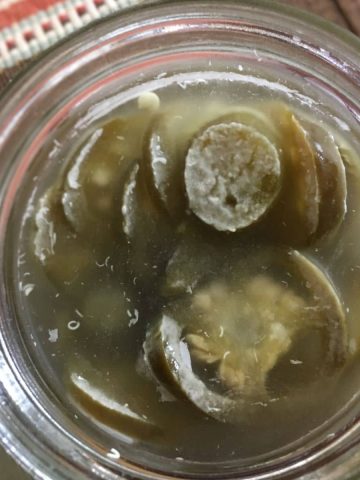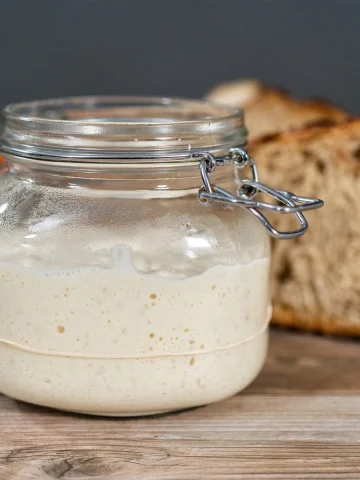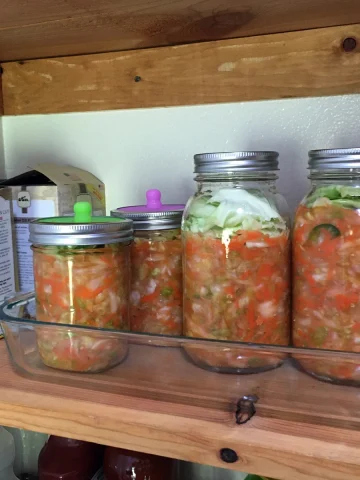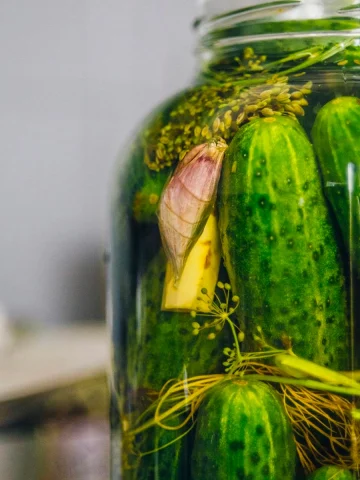4 Tips for Fixing Salty Sauerkraut & Making Sure it Doesn’t Happen Again
Let's face it, there is an endless supply of sauerkraut recipes out there, and they all recommend varying amounts of salt and sizes of cabbage. So it is no wonder you are searching for "How to fix too salty sauerkraut?"
If you taste your sauerkraut and it is too salty, try one of the following four tips on how to fix overly salty sauerkraut.
Jump to:
- 4 Tips for Fixing Salty Sauerkraut & Making Sure it Doesn’t Happen Again
- Here are the easiest methods for saving your next batch of sauerkraut
- 1. Dilute the Brine
- 2. Drain the Brine
- 3. Lather, rinse and repeat
- 4. Add to Another Dish
- How to prevent overly salty sauerkraut in the future, remember these tips
- Use high-quality salt
- Taste and adjust: Gradually add the salt to the cabbage
- How much salt should you use
- It also depends on your taste preference too
It can be challenging to get the proportions right when a recipe calls for two medium or one large head of cabbage or any vegetable. After all, size is relative, right? Your medium could be different from my idea of the medium. Now add salt to the mix, and BAM, you've ruined a nice batch of sauerkraut.
Here are the easiest methods for saving your next batch of sauerkraut
1. Dilute the Brine
Adding more cabbage, vegetables, or water to the mix will help offset the saltiness.
You will probably have to move it to a bigger vessel or split it into two jars to ensure adequate space in the fermentation vessel.
Be sure the new vegetables are mixed in well and held below the salt brine.
Let it sit for at least one or two more days to allow the new vegetables to ferment.
The new ingredients will easily continue with the fermentation process.
Related Topic:
These hardwood cabbage shredders make quick work of slicing cabbage into delicious, flossy shreds that are 1mm thick. Perfect for creating excellent quality sauerkraut or coleslaw with an incredible texture.
Last update on 2025-05-18 / Affiliate links / Images from Amazon Product Advertising API
2. Drain the Brine
Drain the salty brine from the jar and set it aside. Rinse the sauerkraut off to remove the salt, and then put both the reserved brine and rinsed sauerkraut back into the jar. This might be a messy option, but it has done the trick for me in the past.
3. Lather, rinse and repeat
Well, something like that. Rinse the sauerkraut off with a little chlorine-free water before eating it. This will remove a slight amount of the good bacteria but certainly not all of it.
4. Add to Another Dish
Add sauerkraut to another dish, such as potato salad, brats, pasta, or even a smoothie. Just make sure to omit the salt that is recommended for the recipe. Combining the two recipes should eliminate the overly salty flavor by balancing the seasoning.
More dishes to add salty sauerkraut to stir-fry, Bolognese sauce, sprinkle on pizza or a garden salad, or anything that needs a little kick.
Sauerkraut tastes amazingly cooked. Add it to your favorite soups and stews; just avoid adding salt.
Beware that cooking it does remove the probiotic health benefits. However, you still get to enjoy its delicious flavors.

In researching how to fix a batch of too-salty sauerkraut, I found several sources that recommended adding a potato to the mix. The theory is that a potato will absorb the extra salt.
I tried this on my overly salty sauerkraut (that is how this whole post got started in the first place, my sauerkraut was too salty) and found that the potato didn't absorb any salt and did not improve the taste at all.
However, I'll leave it up to you to decide if you want to test this theory yourself.
How to prevent overly salty sauerkraut in the future, remember these tips
Use high-quality salt
Himalayan Pink Salt and Redmond’s Real Salt are mineral-rich salts that contain less sodium and impart a greater flavor to foods. Avoid iodized salt and salts that include anti-caking agents, often in table salt and some kosher salts.
Taste and adjust: Gradually add the salt to the cabbage
During the first steps of making sauerkraut, add a little bit of salt at a time when you combine the salt and cabbage.
Taste the liquid that is being squeezed out of the cabbage. This is when you can determine if the salt level is right for you. Continue to add salt until the flavor is just right. Add a few tablespoons of water to the mixture if it gets too salty.
How much salt should you use
Most recipes recommend a 2.0-2.5% of salt brine to the weight of the sliced cabbage mixture. However, much documentation shows a lower level of 1.5% salinity will still make a successful batch of sauerkraut.
It also depends on your taste preference too
Here is a short video of Sandor Katz, author of Wild Fermentation, talking about how much salt you should use in your sauerkraut or fermented vegetable recipe.





